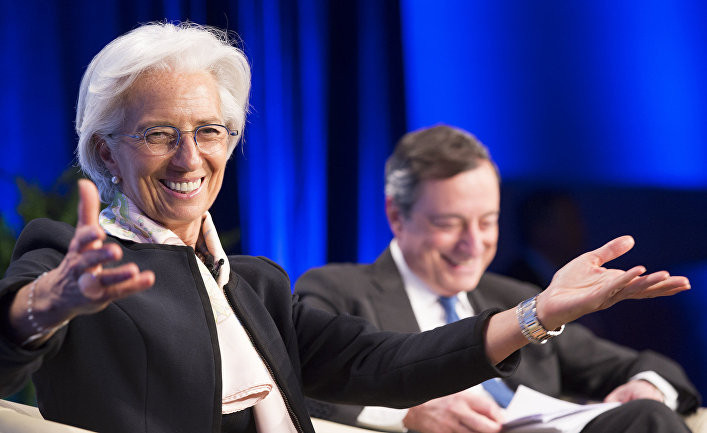
After Christine Lagarde, president of the European Central Bank, warned yesterday that inflation in the eurozone is still too high and is the biggest problem, the euro increased somewhat. She also pledged that lawmakers will not back down from their attempts to get price growth back to normal levels. Lagarde stated on Thursday in Davos that "Inflation by any measure, no matter from which side you look at it, is too high. We'll continue raising rates and then shift to a trajectory that restricts spending for a sufficient amount of time to quickly bring inflation back to 2%."

Some eurozone politicians have previously suggested that it is already reasonable to discuss the viability of a less aggressive rate hike after price growth slows and the price of natural gas declines, but only after another step of 0.5 percentage points is predicted in February.
Some, on the other hand, argue that core inflation is far from ideal and point out that it set a new record high in December. Christine Lagarde and those who want to keep moving forward with rate increases will benefit from this.
Lagarde's words from last month regarding the necessity of raising the rate by half a point in the near future still hold today, according to members of the Governing Council Francois Villeroy de Galhau and Klaas Knot, who recently confirmed them in Davos.
At least one additional rate rise of 50 basis points is anticipated at the following meeting based on the new data that is now available. However, if the rate of inflation increase does not aggressively go down, the regulator will likely continue to pursue a strong stance until the spring of this year.
A report from the European Central Bank's monetary policy meeting claims that several officials first predicted a rate increase of 75 basis points in December but afterward revised their prediction downward by 0.5%. The risks of underlying pricing pressure are discussed in the paper, along with worries about inflation being entrenched in the eurozone countries for a longer period.
Lagarde added that a little recession is now more probable than the start of one. "Over the past three weeks, the news has changed dramatically for the better. Despite not being a great year, it will be substantially better than we anticipated," said Lagarde.
Given that the bullish trend has not yet been broken, the technical picture of EUR/USD indicates that demand for the euro could resume at any time. There is also a prospect for more expansion and setting new records for the year. Staying above 1.0820 will cause the trading instrument to surge to the 1.0870 region, which is what is needed to achieve this. You may reach 1.0930 with ease by climbing over this point. If the trading instrument falls, only a breakdown of support at 1.0820 will put more pressure on the pair and potentially cause it to fall as low as 1.0720.
Regarding the technical picture of the GBP/USD, it failed to update the weekly maximum, severely limiting the pair's future upward potential. Buyers must continue to trade over 1.2330 to keep their advantage. The only thing that will increase the likelihood of a further recovery to the 1.2500 region, after which it will be feasible to discuss a more abrupt move of the pound up to the 1.2550 area, is the loss of resistance at 1.2430. After the bears seize control of 1.2330, it is feasible to discuss the pressure on the trading instrument. The GBP/USD will be forced back to 1.2250 and 1.2190 as a result, hitting the bulls' positions.